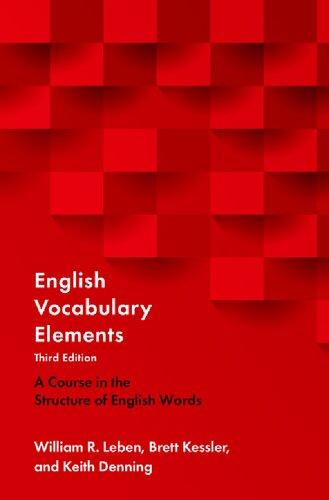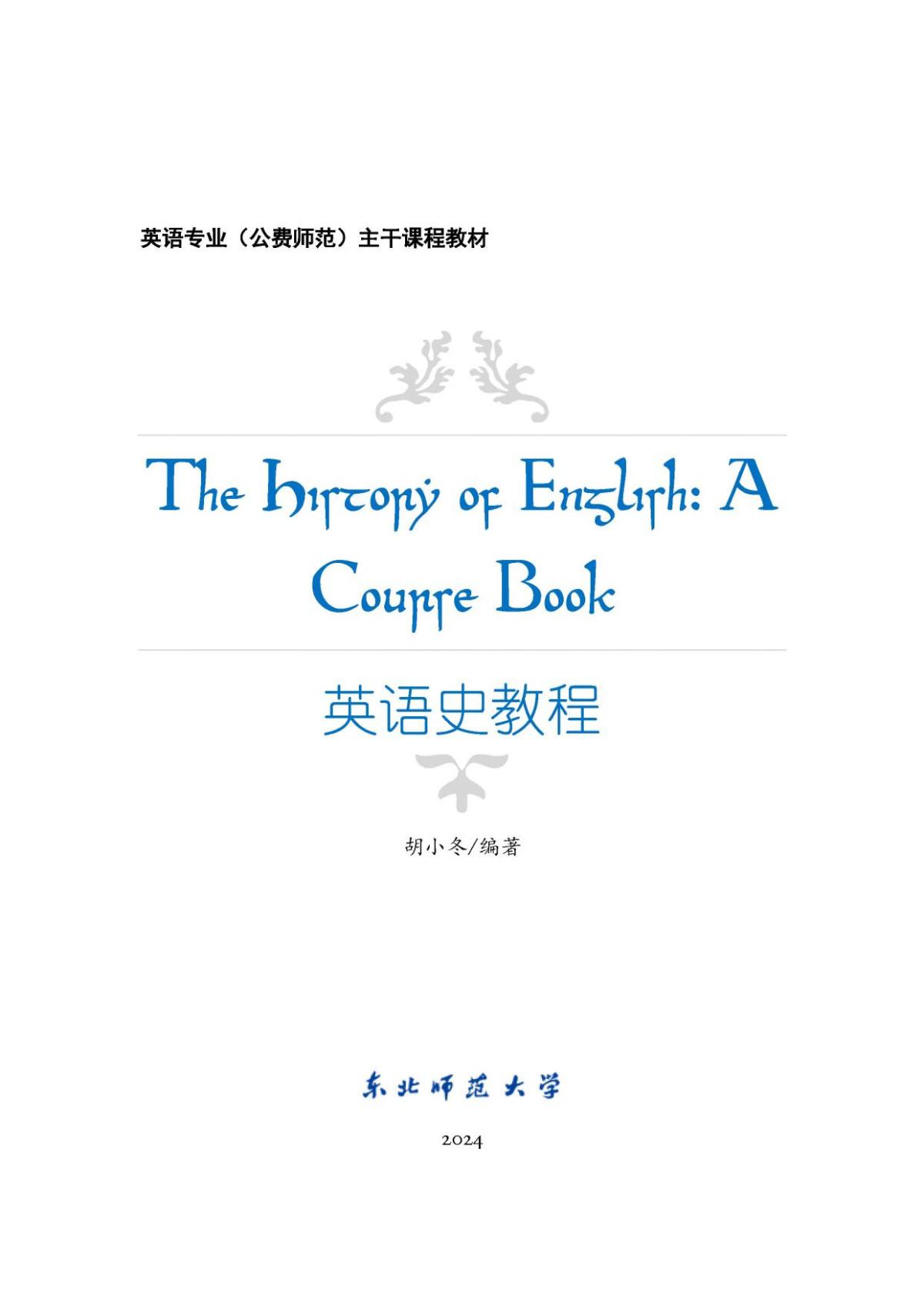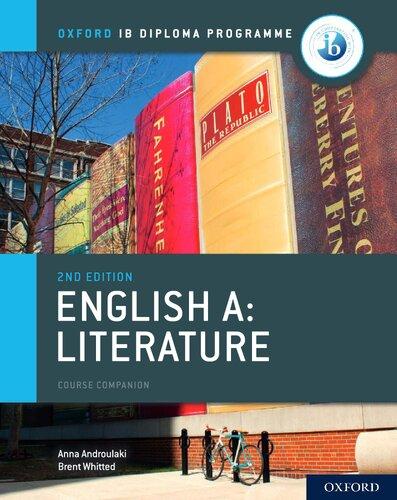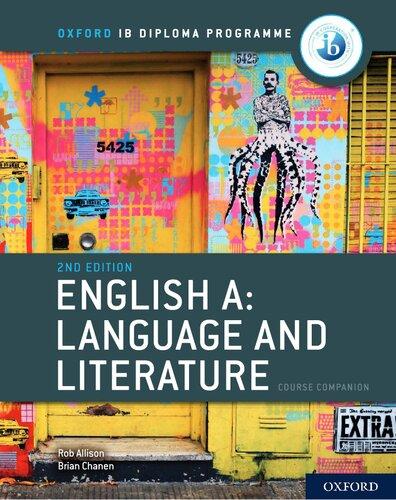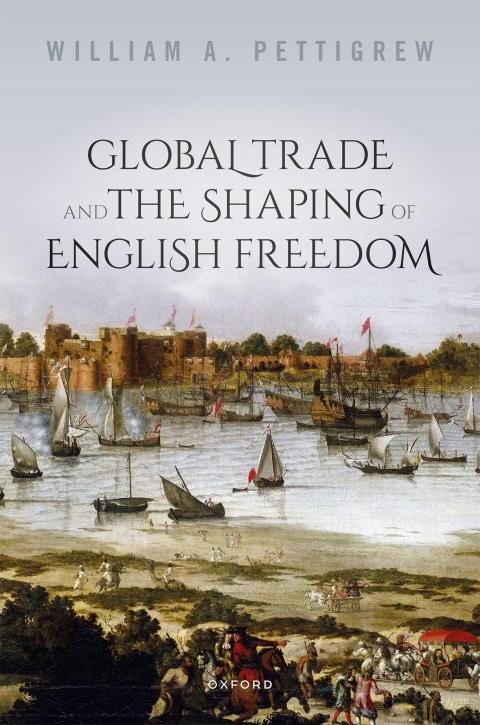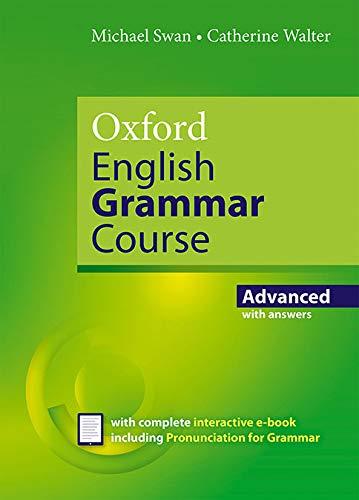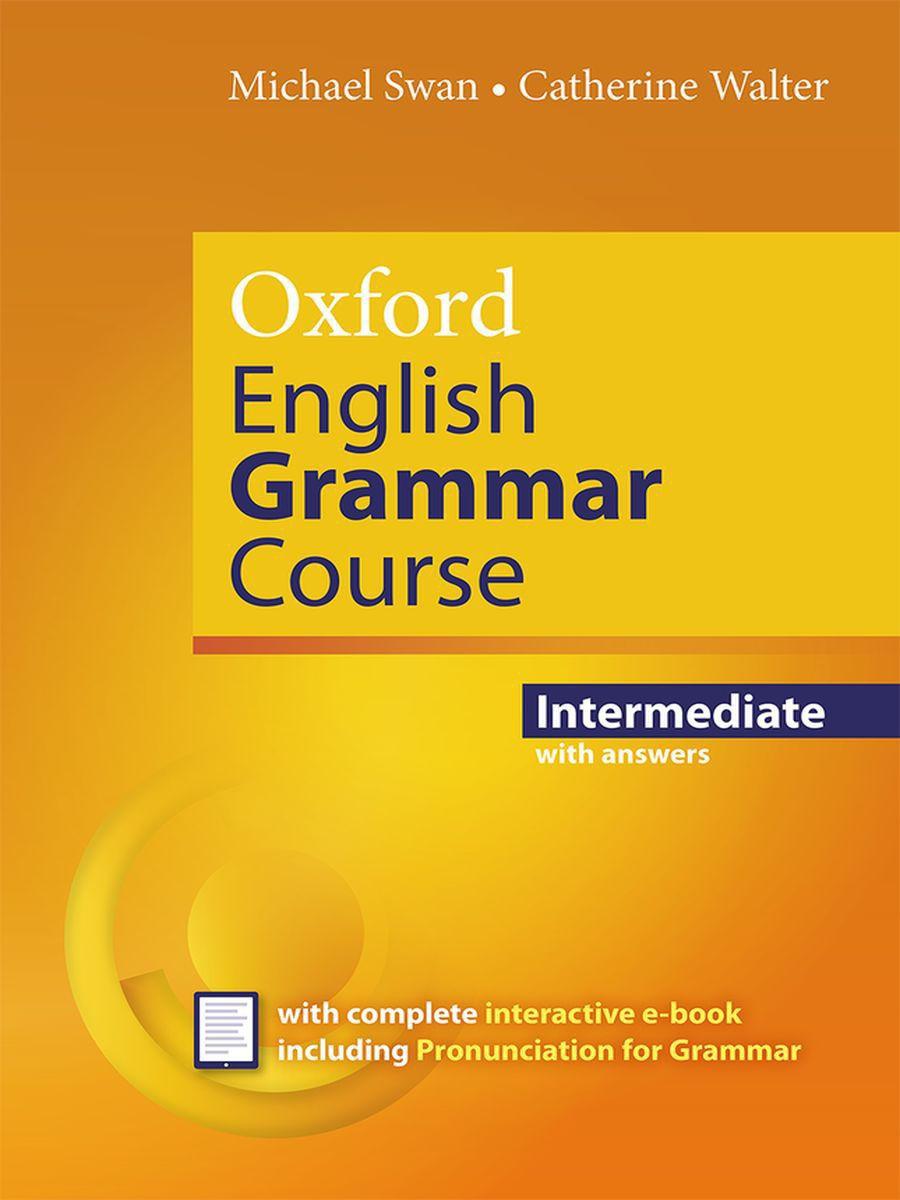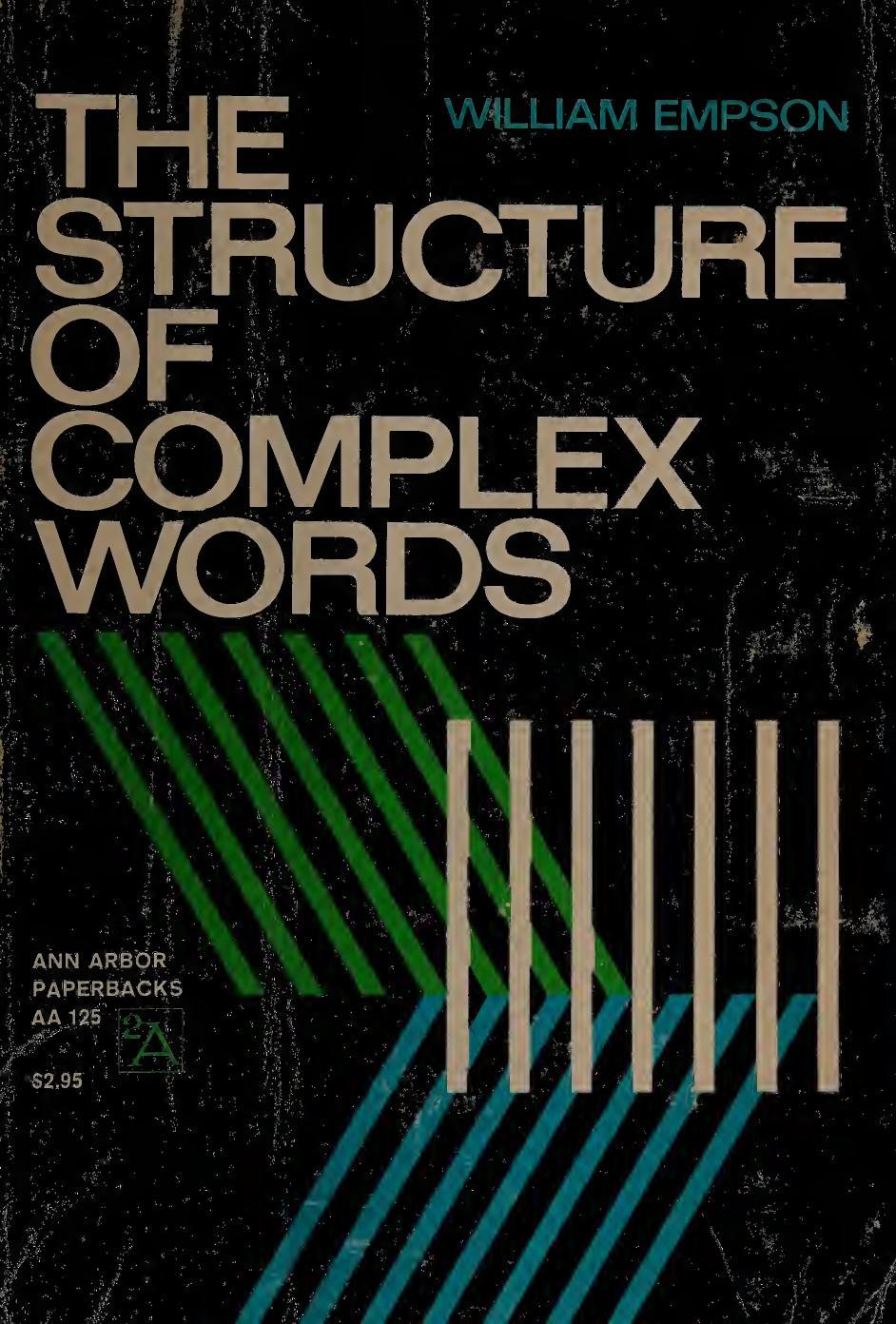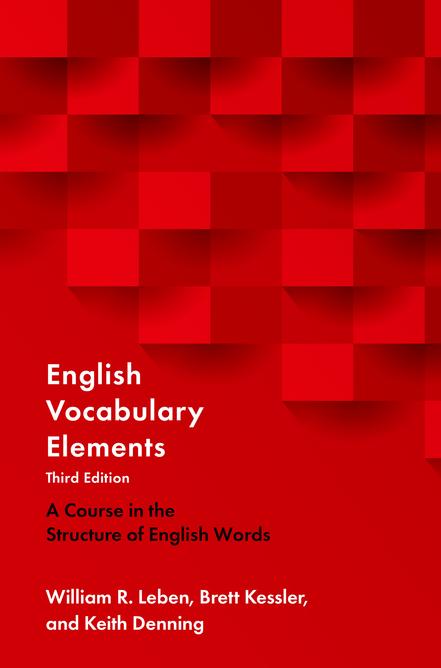English Vocabulary Elements
A Course in the Structure of English Words
THIRD EDITION ■
WILLIAM R. LEBEN
BRETT KESSLER AND KEITH DENNING
Oxford University Press is a department of the University of Oxford. It furthers the University’s objective of excellence in research, scholarship, and education by publishing worldwide. Oxford is a registered trade mark of Oxford University Press in the UK and certain other countries.
Published in the United States of America by Oxford University Press 198 Madison Avenue, New York, NY 10016, United States of America.
© Oxford University Press 2023
All rights reserved. No part of this publication may be reproduced, stored in a retrieval system, or transmitted, in any form or by any means, without the prior permission in writing of Oxford University Press, or as expressly permitted by law, by license, or under terms agreed with the appropriate reproduction rights organization. Inquiries concerning reproduction outside the scope of the above should be sent to the Rights Department, Oxford University Press, at the address above.
You must not circulate this work in any other form and you must impose this same condition on any acquirer.
Library of Congress Cataloging-in-Publication Data
Names: Leben, William Ronald, 1943- author. | Kessler, Brett, 1956- author.
Title: English vocabulary elements : a course in the structure of English words / William R. Leben and Brett Kessler.
Description: 3rd edition. | New York, NY : Oxford University Press, [2023] | Includes bibliographical references and index. |
Identifiers: LCCN 2022041742 (print) | LCCN 2022041743 (ebook) | ISBN 9780190925475 (hardback) | ISBN 9780190925482 (paperback) | ISBN 9780190925505 (epub) | ISBN 9780197521083
Subjects: LCSH: Vocabulary. | English language—Grammar. | English language—Study and teaching (Higher)
Classification: LCC PE1449 .L329 2023 (print) | LCC PE1449 (ebook) | DDC 428.1—dc22/eng/20220902
LC record available at https://lccn.loc.gov/2022041742
LC ebook record available at https://lccn.loc.gov/2022041743
DOI: 10.1093/oso/9780190925475.001.0001
9 8 7 6 5 4 3 2 1
Paperback printed by Sheridan Books, Inc., United States of America
Hardback printed by Bridgeport National Bindery, Inc., United States of America
CONTENTS
Preface vii
List of Figures xiii
List of Tables xv
Symbols and Abbreviations xvii
About the Companion Website xxiii
1. The Wealth of English 1
2. The History of English and Sources of English Vocabulary 19
3. Morphology: The Structure of Complex Words 45
4. Allomorphy 91
5. Phonetics 115
6. Regular Allomorphy; Numeric Elements 137
7. Meaning Change 167
8. Usage and Variation 193
9. Latin and Greek Affixes in English 213
10. The Prehistory of English and the Other Indo-European Languages 235
11. Later Changes: From Latin to French to English 257
Appendix 1. Elements to Glosses 275
Appendix 2. Glosses to Elements 293
Glossary 311
Further Reading and Research Tools 327
Index 331
INTENDED AUDIENCE FOR THIS BOOK
This book is designed for college-level courses about English words and word structure. It explores how units of a language—sounds, word elements, words—function together and how a language functions in society over time. The ultimate aim is to acquaint native and nonnative English speakers with aspects of English vocabulary that may be new to them. This includes practice in analyzing complex words, tracing how English got to its present state, and outlining factors that influence people’s attitudes toward English usage. We hope this book will serve students in any field of study looking for better comprehension of English vocabulary as well as anyone curious about the language, its development over time, and its growing importance as a world language.
As the primary language of the World Wide Web, English is a more widespread tool of communication than ever. We hope that this book will supply readers with knowledge that will help them use English more effectively and understand others better. Ideally, we hope to impart the curiosity about the language that has motivated us to write this book.
The book’s first goal is to expand vocabulary skills by teaching the basic units of learned, specialized, and scientific English vocabulary. To make sense of current English word structure and to build word analysis skills that will continue to prove useful, the book presents basic principles of word formation and word use and shows how these have affected
English since its beginnings. This in turn leads to further topics, including phonetics and the relationship of English to other Indo-European languages. Along the way, we make a stab at the difficult question of what is considered good English. In covering such a broad range of material, the book provides an introduction to some of the most important concepts of modern linguistics.
USING THIS BOOK
Key concepts are shown in boldface when introduced (e.g., gloss and doublet). We stress, though, that as important as the definitions may be, a bigger goal is to gain an idea of the role of these concepts in the overall system of language.
Lists of word elements to be memorized accompany most chapters. Wherever possible, the elements are placed in a chapter where they will illustrate and round out some of the chapter’s content. Following them are a variety of exercises. Some help build familiarity with word elements by putting them to use in words. Others apply principles from the chapters to new cases. We hope the book’s organization encourages you to master material as you encounter it instead of saving memorization until the end.
VOCABULARY- BUILDING TECHNIQUES
Students may find flashcards useful for memorizing word elements. A simpler method is to cover one side of the list of elements and glosses and, going from top to bottom and then from bottom to top, to try to recall the element for each gloss and then the gloss for each element. Other approaches to the task of self-drilling for memorization include repeating word elements and glosses to yourself until you cannot internally hear one without the other, or finding a rhyme or mental picture that helps you associate elements with their glosses (e.g., “tom ‘cut’ is easy to remember
as the root of atom or because it’s the name of my friend Tom, who can be very cutting”).
USING A DICTIONARY
As a companion to this text, we strongly recommend a bound or online dictionary designed for college level or above. An excellent choice is The American Heritage Dictionary of the English Language, https://www .ahdictionary.com. A particularly useful feature of this dictionary is an appendix of Indo-European roots, tracing many everyday words back to their source. A more comprehensive version of that appendix was published separately as The American Heritage Dictionary of Indo-European Roots (3rd ed., 2011). Another good choice is Merriam-Webster’s Collegiate Dictionary (11th ed., 2020, https://www.merriam-webster.com).
For a larger dictionary, consult the Oxford English Dictionary (OED, 2nd ed. in 20 vols. plus CD-ROM; Oxford: Oxford University Press, 2009). A more current version is available online through some libraries or by subscription: https://www.oed.com. The OED is an ideal resource for this course, offering detailed etymologies and tracing word meanings through their entire history in the language. Another standard resource is Webster’s Third New International Dictionary, Unabridged (Springfield, MA: Merriam-Webster, 1961). It is undergoing constant revision under the name Merriam-Webster Unabridged, accessible by subscription at https:// unabridged.merriam-webster.com.
Later in the book we refer you to specialized references for topics like medicine and botany.
Using a dictionary effectively is a skill that must be learned. The first step is to become comfortable with the basic layout of the dictionary. Most good ones make this task easier with explanations of entries, lists of abbreviations, and so forth, in the introductory pages. Taking the time to read this material can help avoid frustration later.
Nowadays most dictionaries are also accessible online. These are invaluable for many kinds of searches (e.g., finding all words that end in ‐archy,
or words whose definition contains the word government). An additional advantage is that many online dictionaries are updated far more often than their hard-copy counterparts. Still, many readers find that going to the printed page permits a level of browsing that can’t be duplicated on computer screens.
One of the best ways to attack the bewildering variety of English vocabulary is to check a dictionary when you confront unfamiliar, difficult, or interesting words. For the most recent additions to the language, the most useful tools may be Urban Dictionary at https://www .urbandictionary.com and the English version of Wiktionary at https://en .wiktionary.org. Each has its limitations. Many of Wiktionary’s entries are compiled by bots, and Urban Dictionary is 100 percent crowdsourced. But for many purposes, the loss in authority is well balanced by access to very recent changes in the language.
When you come across an unfamiliar word or element, take a moment to look it up or at least make a note of it for later reference. In the end, learning to look for and recognize the elements and words you have already learned in the course (as well as those you acquire on your own) will keep you from having to check the same references again and again, thus maximizing the time available for exposing yourself to entirely new information.
MOVING BEYOND THE FINAL CHAPTER
This book doesn’t contain 1 percent of what the authors find interesting about English vocabulary. We will judge the text successful if the groundwork laid here motivates readers to explore further and provides enough skills to undertake such explorations.
More comprehensive lists of Latin and Greek word elements than those in the appendices (compiled from the element lists at the ends of chapters) can be found in works listed at the end of this book. These works list elements according to a variety of principles, but a little searching can help you find and identify many new word elements.
The World Wide Web is a rich source of lists of words and word elements. By far the most comprehensive is https:// www.engl ishcorp ora.org , a collection of very large English- language corpora representing many varieties of written and spoken English, accessible through a versatile set of search tools.
ACKNOWLEDGMENTS
We owe profound thanks to our students and teaching assistants over the years for many helpful and insightful suggestions. The course that led to this book owes its development to the textbook Structure of English Words, by Clarence Sloat and Sharon Taylor—now in its fifth edition (Dubuque, Iowa: Kendall/Hunt, 2011)—and to course materials prepared by Robert Stockwell, and we are indebted to these sources for first showing the way. We are also grateful to many colleagues for generous and helpful comments and corrections: to J. David Placek, Robert Vago, and R. M. R. Hall, and the late John J. Ohala, who offered extensive suggestions for the first edition. Special thanks to JoAn Chase, Ivan Chow, Bahram Darya-Bari, Sally Eberle, Tamiko Eto, Herant Katchadourian, Suzanne Kemmer, Joan Maling, Joe Meyers, Nasreen Sarwar, Beverly Benz Treuille, Rosette Weiss, and many students over the past few decades for corrections to the first and second editions. Thanks also to Daniel Leben-Wolf for doing the art. Tragically, Keith Denning, coauthor of the first edition, passed away suddenly in 1998.
NEW TO THIS EDITION
Most chapters have been revised to bring out key principles of word analysis; illustrative examples have been updated and new ones added. One guiding principle was to make the book easier to follow for students— native and nonnative speakers alike—seeking to improve their English vocabulary skills. Analyses of individual words and word groups have
been updated and corrected, and Chapter 3, the longest chapter, has been rewritten for greater clarity. Because it introduces the principles and tools of word analysis that are used in the rest of the book, and because we hope the book will be of use even in courses with no prerequisites, many definitions of technical terminology appear that may be new to students. To bring chapter 10 into closer conformity with updated IndoEuropeanist transcription practices, we now use the same system found in Wiktionary’s etymologies rather than conjectural International Phonetic Alphabet. Some reconstructions have also been updated.
Most figures were redrawn for improved readability. New word study questions and exercises have been added to the end of each chapter, with more explicit instructions replacing some of the ones for existing questions and exercises. The more technical chapters now include self-tests to help students check their progress through the chapter. Bibliographical references have been revised extensively to replace older references with more up-to-date ones, and all now have current web links.
The glossary and appendices have been streamlined, the first by omitting terms too well known or too peripheral to require a definition, and the second by omitting word elements not in the element sets at the end of chapters. These element lists have added examples to better illustrate the range of variant forms the elements take. The index, too, was streamlined by dropping entries for specific words and word elements. In their place are entries and subentries on additional topics from the book.
Finally, we have added a companion website to the third edition to help students master the course material. The website has quizzes on vocabulary elements and supplementary interactive exercises and drills on essential points from the text. The companion website is available at https:// oup.com/us/EnglishVocabularyElements.
2.1 Stages in the development of English and some of its relatives 23
2.2 Major paths of borrowing from Greek and Latinate sources into English 35
2.3 Developments involving word elements meaning ‘wine’ up to Modern English 36
3.1 Representing the ambiguity of undoable 52
5.1 The articulatory apparatus 118
7.1 Development of the meaning of horse 174
7.2 Development of the meanings of hysterical 174
7.3 A real horse 176
7.4 A metaphorical horse 177
TABLES
1.1 Changes in sound in Latin and French and their results in borrowings 9
2.1 The Great Vowel Shift 33
5.1 Places and manners of articulation of English consonants 124
5.2 Vowels of American English 126
6.1 Most common pronunciations of the Latin letters in Classical Latin and in Modern English 139
6.2 Classical numeric elements 153
6.3 Prefixes of the International System of Units 155
7.1 Meanings of the suffix ‐ous 168
7.2 Meanings of the suffix ‐ic 168
7.3 Stages in the history of the word horse 173
7.4 Metaphoric extensions of meaning of spatial prefixes 178
7.5 Building words with Latin spatial prefixes 186
7.6 Building words with Greek spatial prefixes 188
9.1 Nominative plural endings in Latin and Greek 216
9.2 Noun-forming suffixes 220
9.3 Adjective-forming suffixes 221
10.1 Cognate words in Latin, Greek, and Sanskrit 236
10.2 Some obstruent correspondences and reconstructed PIE 238
10.3 The consonants of Proto-Indo-European 241
10.4 Consonant correspondences for PIE, Greek, Latin, and English 247
SYMBOLS AND ABBREVIATIONS
INTERNATIONAL PHONETIC ALPHABET
The following symbols are used in the text when a pronunciation must be described precisely. The boldface parts of the words beside each symbol illustrate the sound; more precise definitions can be found in chapter 6, “Phonetics.” Unless otherwise noted, the keywords are to be given current standard American pronunciations. The phonetic symbols used here are those of the International Phonetic Association (IPA). This is the standard transcription system for linguistic work as well as for popular reference sources such as Wiktionary, https://en.wiktionary.org/. Further information about this phonetic alphabet is available in the Handbook of the International Phonetic Association (Cambridge: Cambridge University Press, 2013, https://www.internationalphoneticassociation.org/content/ handbook-ipa).
When these symbols are used, they are enclosed in square brackets. For example, “the word bathe is pronounced [beð]” or “the sound [ʒ] occurs at the end of the word rouge.”
a hock; also in ride [raɪd], out [aʊt]
ɒ hawk
æ cat b boy d dog
dʒ badge
ð they
e made
ə elephant, cut
ε pet
f fat
g go
h hot
i machine
i pit
j hallelujah, yell
k kiss
l left
m mark
n nice
ŋ sing
o rose
ɔ horse; also in joy [dʒɔɪ]
p pot
r run, irk
s sit
ʃ ship
t top
tʃ catch
u prune
ʊ put
v vote
w worm
x German Bach, Scottish loch, Hebrew Hanukkah (a raspy [k])
y French tu, German Übermensch ([i] with rounded lips)
z zoo
ʒ pleasure
θ thigh
Many North Americans do not distinguish [a] and [ɒ] in their speech, so that hock and hawk sound alike. In addition to these symbols based on letters, we also use the following characters:
ˈ Precedes a stressed syllable: “record is pronounced [ˈ rɛkrd] when a noun and [rɪˈkɔrd] when a verb.”
ː Follows a long sound. For American English the mark is not necessary, but the contrast between short and long sounds is important for many other languages: “Latin [ˈakɛr] ‘maple’ vs. [ˈ aːkɛr] ‘sharp’.”
r A vertical stroke under a consonant means that it forms the core of a syllable instead of a vowel: “butter [ˈbətr], apple [ˈæpl].”
MODIFIED ORTHOGRAPHY
When the precision of the IPA is not required, it is often more convenient to indicate certain aspects of the pronunciation of a word by adding diacritics to the standard spelling, or orthography, of the word. For example, if we wish to note that the first vowel in the Latin word for “sharp” is long, we can write “ācer” rather than “‹acer› [aːkɛr].” The diacritics used in orthography are as follows:
Placed over a long vowel: “Latin ācer ‘sharp’
˘ Placed over a short vowel: “Latin acer ‘maple’ ”
ABBREVIATIONS
a adjective adv adverb
cf. compare (Latin confer)
G Greek
L Latin
lit. literally
ME Middle English
ModE Modern English
n noun
OE Old English
prep preposition
SI International System of Units
v verb
TYPOGRAPHICAL CONVENTIONS
Typefaces
italics When words are cited (talked about rather than used functionally), they are set in italics. The same applies to word elements and phrases: “It depends on what the meaning of is is”; “The word prefix begins with the prefix pre‐.”
bold Boldface is used to draw the reader’s attention to a specific word or element: “epi‐ means ‘additional’ in words like epithet ‘nickname’.”
caps Small capitals are used for words and abbreviations describing parts of speech: “recordn has a different stress from recordv.”
Punctuation and Other Symbols
In addition to regular double quotes—“ . . . ”—which have their everyday meaning, the book uses the following types of quote marks for specific linguistic purposes:
‹ . . . › When the discussion deals specifically with spelling, letters are enclosed in angled brackets: “the letter ‹s›.”
[ . . . ] Pronunciation may be indicated by placing phonetic symbols between square brackets: “[tɪr] and [tɛr] are both spelled ‹tear›.”
‘ . . . ’ If meaning (rather than sound or spelling) is the focus, a word or phrase appears within single quotes: “Greek cosmos ‘universe’.”
ˣ . . . The mark ˣ before a word means that it is ill-formed: “the past tense of write is not ˣwrited.”
* . . . The mark * before a word or element means that it is unattested, but we have reason to believe it existed: “The word chief must come from a popular Latin word *capum, not the classical Latin caput.”
Other special symbols include the following:
X < Y X descended from Y: “oak < OE āc.”
Y > X Y developed into X: “āc > oak.”
Y → X X developed from Y by some morphological or analogical process: “Irregular English plurals include ox → oxen and goose → geese.”
X~Y X and Y are variants: “The past tense of dive is dived~dove.”
∅ Zero, the absence of a sound or letter: “The plural of deer is formed by adding ∅.”
X‐ More material must be added at the end of X to make a complete word. Prefixes and stems are cited with a trailing hyphen: “pre‐,” “writt‐.”
‐X X is a suffix: “‐ism.”
X‐Y A hyphen inside a word separates morphs: “There are three meaningful components in the word black‐bird‐s.”
( . . . ) When part of a word or morph is in parentheses, that part doesn’t always appear: “The morpheme cur(r) appears in recur and recurrent.”
/ In a phonological rule, / separates the statement of the change from the description of the environment in which it takes place. In the environment of a phonological rule, _ stands for the sound under discussion: “n → m / _ p” means that [n] becomes [m] before a [p].
The Wealth of English
WORD POWER AND A WORLD POWER
In the number of speakers who learn it as a first or second language, and in its range of uses and adaptability to general and specific tasks, English is the world’s most important language today. It is the mother tongue of several hundred million people. Its rich verbal art, great works in science and scholarship, and major role in international commerce and culture have made English the most frequently taught second language in the world.
English is not the first language of as many individuals as Mandarin Chinese. But it is spoken over a much vaster area. In North America, Europe, Asia, Africa, and elsewhere, it is the official language of many nations, including some where English is not most people’s first language. Native speakers of English number about 5 percent of the world’s population, yet over 60 percent of websites are in English.
A history of political importance as well as a certain linguistic suppleness has endowed English with an enormous vocabulary. Webster’s Third New International Dictionary contains 476,000 words, and these do not include the many technical terms that appear only in specialized dictionaries for particular fields or recent neologisms, not to mention all the regular plural forms of nouns, the different present and past tense forms of verbs, and other words derived from these words.
The size of the English vocabulary has some wonderful advantages. Although it may be true that any concept can be expressed in any language,
English Vocabulary Elements. William R. Leben, Brett Kessler, and Keith Denning, Oxford University Press. © Oxford University Press 2023. DOI: 10.1093/oso/9780190925475.003.0001
a language can make the process easier or harder by providing or not providing appropriate words. Thanks to the well-developed word stock of English, English speakers have a head start over speakers of other languages in being able to express themselves clearly and concisely.
Whether one uses this head start or not is, of course, up to the individual, but speakers with a good command of vocabulary can say things in more subtly different (and, hence, often more effective) ways than others can, and this ability is noticed.
• We refer to friends and acquaintances as good speakers, fast talkers, or boring conversationalists.
• Vocabulary knowledge is a key to good academic performance.
• A job or school application or interview often turns on how adept at using language the interviewee is.
• We find that we can overcome individual and group handicaps once we’re recognized as effective communicators.
In cases like these, success or failure hinges on our degree of skill in expressing ourselves and in understanding others in speech and in writing. The expressive power of language is enormous, and every time a word acquires a new shade of meaning—a common development, as we will see—the language is enriched. Still, novel uses of language are not always welcomed by everyone, and in a later topic we have a look at changes to language that are treated by some as signs of decline and by others as signs of growth.
The enormous size of the English vocabulary also has its disadvantages, as we are reminded each time we have to use a dictionary to look up a word we don’t know or because a word we recognize is used in a way unfamiliar to us. A language as vocabulary-rich as English is full of surprises, and however wonderful it may be that this richness is always increasing, it places a potentially painful burden on us when we first learn words and their meanings.
To sum up, English is extraordinarily well endowed with words. As versatile as the language already is, the supply of words is ever on the rise,
with their meanings shifting in time to reflect new uses. These are the facts that we deal with in this book.
ON THE ATTACK
A challenge of such large proportions calls for a well-organized attack. Although there are no real shortcuts to a better vocabulary, some of the work has already been done for us, since most of the complex words in the language have similar, fairly transparent, structures. Learning the rules that uncover the structure of a certain kind of word relieves some of the burden (and, perhaps, boredom) of learning all the words of that type individually.
We must divide to conquer. The study of word structure (known as morphology) will lead to a better understanding of the contribution of the individual parts to the meaning of the whole. It also creates a feel for how English came to be the way it is and a feel for the languages English has drawn on over the centuries.
PRECISION AND ADAPTABILITY
Thanks to a wealth of words that are nearly synonymous yet embody subtle differences in meaning, English vocabulary offers a wide range of choices for expressing exactly what we mean. A simple example is a choice between the words paternal and fatherly in the following sentences—a distinction few other languages make.
paternal or fatherly?
a. The judge’s decision restricted Tom’s _ rights.
b. George gave Kim a _ smile and then went back to reading.
You would likely choose paternal for the first sentence and fatherly for the second. Certainly, fatherly and paternal share the same basic meaning
or denotation, and you could have used fatherly in the first sentence and paternal in the second, but the opposite choice is preferred because of connotation, the subtler secondary associations of a word. Connotation includes factors such as style, mood, and level of familiarity. Paternal is a more formal choice and therefore appropriate to a legal context like that in the first sentence, while fatherly is less formal in style. Fatherly connotes idealized qualities of fatherhood, like personal warmth and love, more strongly than paternal.
Another feature that increases the expressive power of the language is its adaptability. English provides many means for creating new words. If our dictionary does not list an appropriate word, we often create one. To fill the need for, say, a verb meaning ‘falsify in advance’, we may add the word element pre‐, which means ‘before’, to the existing verb falsify and then use it in a sentence: The author must pre‐falsify the manuscript.
Similarly, the element ‐like (as in childlike or treelike) will attach to an endless number of other nouns to create an adjective you’ve never heard before, such as syzygy-like. If we invent a device for examining wings and recognize that in many words pter means ‘wing’ (as in pterodactyl) and that scope means ‘a viewing device’ (as in microscope ‘a device for examining very small things’), we may call the new device a pteroscope, a word never before recorded in the dictionary. It is hard to imagine a new idea that couldn’t be expressed by combining English words or their parts in new ways.
Such adaptability means that even the largest dictionaries can’t capture every possible word in the language. The number of possible combinations of word elements like pre‐, pter, and scope and the immeasurable amount of speaking and writing done in English require that dictionary editors restrict themselves to listing only the most frequent words in a language, and even then, only those used over a substantial period of time. Dictionaries are therefore always at least slightly out of date and inaccurate in their descriptions of the language’s stock of words. In addition, the use of many words is restricted to specific domains. For example, medical terminology involves a tremendous number of words unfamiliar to those outside the
medical community. Many of these terms never enter general dictionaries of the language and can only be found in specialized medical dictionaries.
THE CONSTANTLY EVOLVING NATURE OF ENGLISH VOCABULARY
Change and innovation are integral to English, as they are to every living language. The productivity of the language has brought in new verbs using the element ‐ize, such as conceptualize, operationalize, and collateralize. While reviled as “corruptions” by some writers, teachers, and usage specialists, these examples are undeniably part of the current language, and experience tells us they are unlikely to be questioned by coming generations.
Taste and style are often matters of personal discretion and are also subject to change. In the course of this book, we hope to build a greater sense of security about how each of us chooses to use the language. Mastering vocabulary means not only learning new words and meanings but also knowing enough to make informed decisions about how and where to use a given word so that we can move freely between the informal, formal, and technical domains of spoken and written English.
WHY ENGLISH IS SO RICH
Modern English is the product of a long and complex process of historical development. English today, as always, is a composite of features retained from an earlier state and features that have changed. As a result, present-day English offers many clues to its past—a past as rich as its current vocabulary. The most important historical factor in the growth of the English vocabulary has been the ease with which it has borrowed words from other languages and adapted them to its own uses. The word clique, for example, came into English from French around the year 1700. As grammarian Otto Jespersen pointed out in 1905, clique has since become a
